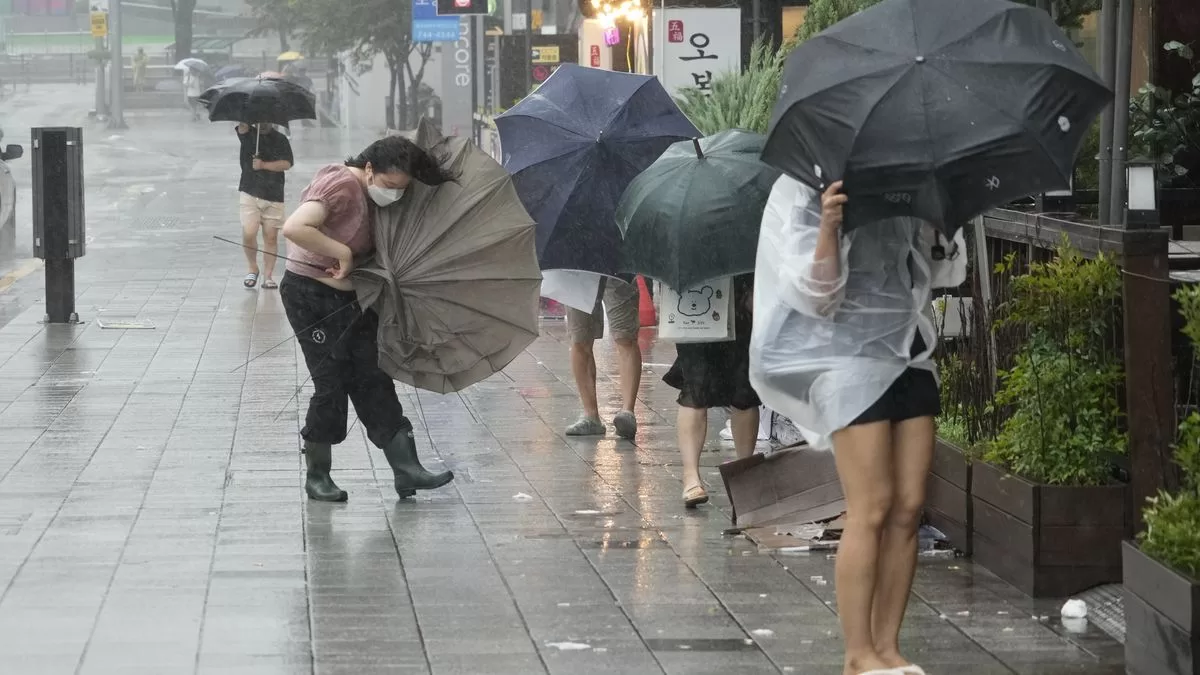As of 11:00 a.m. Thursday, there were immediate reports of deaths or injuries associated with the storm, according to the Ministry of the Interior and Security. More than 10,000 people, mostly in southern coastal areas, were forced to evacuate their homes, and the number was expected to continue to grow.
Authorities closed hundreds of highways, streets and public parks and sent alert messages warning of the risk of storm Khanun, which came just weeks after torrential rains triggered flash floods and landslides that claimed at least 47 lives.
Some parts of the country have already received more than a foot (30 centimeters) of rain, and emergency workers were responding to increasing warnings of flooding and landslides Thursday afternoon.
After making landfall around 9:30 a.m. in the southwest of the country, near the port of Geoje, the meteor was moving north at 38 km/h (23 mph) at 2:30 p.m. and was approaching the inner city of Andong after losing some strength, with maximum sustained winds of 104 km/h (64 mph).
Tropical storm Khanun will batter the country for several hours with heavy rains and winds as it slowly advances across the Korean Peninsula. The vortex will touch the Seoul metropolitan area, where half of South Korea’s 51 million people live. The Korea Meteorological Administration (KMA) said the storm will weaken as it moves toward North Korea early Friday, but the capital area will continue to feel its effects until Friday afternoon. .
Since Wednesday, the storm has dumped nearly 35 centimeters (14 inches) of rain on the southern cities of Changwon and Yangsan.
In Changwon, emergency workers used ropes to rescue pedestrians trapped on wide stretches of flooded roads, and responded to landslides that left dirt and other materials on roads. Residents and shopkeepers barricaded their doors with sandbags as workers put up flood barriers to protect a major fish market. In Geoje, emergency workers wearing helmets were examining a parking lot where vehicles had been crushed or damaged by bricks and other materials apparently blown by strong winds.
In the coastal city of Busan, the country’s second-largest city, winds reached 126 km/h (78 mph) and emergency workers dressed in orange uniforms were removing trees that fell on the streets and responding to reports of fences toppled, broken windows and other damage.
The neighboring cities of Ulsan, Pohang and Gimcheon issued flood advisories for areas near rivers and streams that flowed through their urban districts.
More than 350 flights were canceled and almost 500 roads were closed.
___
Kim reported from Seoul, South Korea.
___
The Associated Press’s coverage of climate and the environment is supported by several private foundations. The AP is solely responsible for all content.
FOUNTAIN: Associated Press



